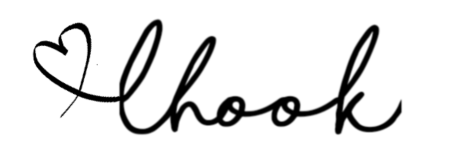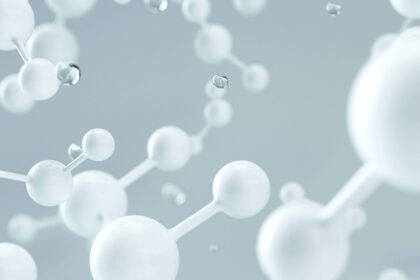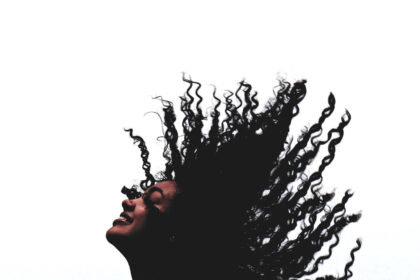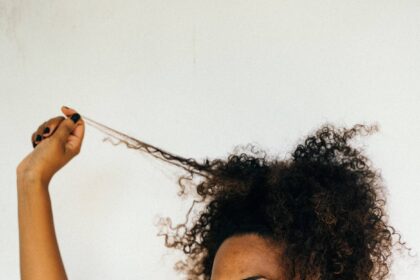What Are Bonds
Bonds are responsible for your hair’s strength and flexibility in terms of styling, as well as your hair texture.
Example:
How are relationships and molecular bonds related?
Take a moment to reflect on the relationships you’ve had over the years. (In the example below “boat” is used to describe weaker, less stable relationships, whereas “ships” refer to more stable relationships)
- There are some relationships that are so weak that the slightest non-issue ruins the relation “boat”.
- There are relationships that may have required a little more force than the first type to break them up, however, they can still be placed in the relation”boat” category.
- There are relation”ships” which are the strongest and require extreme disruption to be broken, and even then, they still remain strong or may become slightly weakened.
Apply this logic to your hair strands!
There are varying types of relation-“BOATS”, and “SHIPS” happening in hair.
These relationships known as “bonds” are responsible for hair’s strength and flexibility. There are quite a few bonds in hair, however, we will focus on four.
What are the types of bonds in hair?
Salt, Hydrogen, Lanthionine, Disulfide, and Sugar/Peptide.
Hydrogen
Hydrogen Bonds account for up to one-third of the hair’s strength. They make it possible for hair to not only stretch but assist with hair returning to its original shape.
You can compare these types to acquaintances that drift in and out of your life, and there are plenty of them in comparison to other bonds.
How do hydrogen bonds affect hair?
With the aid of heat or water, they allow you to temporarily change the shape of the hair. For instance, using the heat of a wand iron to add beachy waves or adding curls to wet hair using bantu knots, or straightening kinky, coily, or curly hair with a flat iron.
- Learn more about styling hair in the How To section.
- Find the Best heat styling tools.
- Learn more about Kinky, coily, curly hair in the natural hair section.
- Find the Best hair styling product for my hair type.
How do hydrogen bonds benefit hair?
Hydrogen bonds contribute to hair’s elasticity and are the easiest of three bonds to break, they are also the easiest to reform. To reform them, wet hair must be dried, and hot hair must be cooled. To break them, hair must get wet or hot. Keep in mind that in its wet state, hair is more vulnerable to damage.
Fun fact: Healthy wet hair can stretch up to 50% of its pre-stretched length. While healthy dry hair will stretch up to 30% of its pre-stretched length.
What are salt bridges?
Though they are stronger than hydrogen, salt bridges are still considered weak in comparison to Disulfide bonds. Like hydrogen, salt bonds account for about one-third of the hair’s overall strength.
Consider these bonds as your friends of convenience. You socialize with them when you need something specific, like workout partners, or book club friends.
How are salt bonds altered?
Salt bridges can be altered by heat and water, they can also be easily broken by altering hair’s pH. Altering the pH is done by using strong alkaline or acidic solutions. Changes to salt bonds result in temporary changes in the structure of the hair. Overuse or improper use of heat, water, and strong solutions can cause permanent damage.
What are Disulfide bonds?
Disulfide bonds play a role in determining the shape of your hair. The more of them in your hair the curlier the strand, the fewer of these bonds the straighter your hair fiber.
These are your lifelong friends “until death do you part.” They will never change or leave you unless you allow someone (you/your stylist/friend who believes they can do hair) or something (harsh chemicals, improper use of styling tools, etc.) to interfere with the relationship.
What do disulfide bridges do?
Disulfide bridges hold the proteins of your hair fiber together and determine whether or not your hair returns to its natural shape when altered by heat and/or water. Disulfide bonds account for up to one-third of your hair’s strength.
How do you break disulfide bonds?
To break these strong bridges, harsh chemicals such as relaxers, perms, or hair colors are needed to get the job done. Once they are broken, and the hair has been reshaped, other chemicals must be used to reconstruct/rebuild the disulfide bridges thus permanently holding the hair in its new shape or color.
Can altered disulfide bridges revert back to their original state?
No. Once changed from their original state disulfide bonds will remain that way until another chemical process changes the shape again. The new shape or color cannot be altered by water.
Do all bonds reform after a chemical process?
During chemical processing, some broken disulfide bonds do not reform leaving, the proteins in chemically processed and in some cases heat treated hair, much weaker than before, causing the hair to be more vulnerable to breakage, split ends, and other challenges. In some cases, when Disulfide bonds are broken new bonds are formed called “Lanthionine bonds”
Fun Fact: It is possible for hair to dissolve with highly alkaline products or other chemicals.
What Are Lanthionine Bonds
Lanthionine bonds are the bond that occurs when disulfide bonds are broken during the relaxing process when using hydroxide chemical relaxers.
Fun fact: It is said that a single scalp hair can hold a weight of 100g and an average head of hair twisted together can support 23 tons.
Does the number of bonds in hair increase or decrease?
While disulfide bonds can only decrease due to age and treatments, Hydrogen and salt bonds may increase and/or decrease with the changing ingredients of various treatments, environmental changes, and manual manipulation using heat and/or water.
Fascinating isn’t it?
Summary
Now you know what holds your hair fibers together and how you make structural changes to your hair with chemistry when you use heat, water, hair products, or other chemicals on your hair and that the chemical bonds which keep the protein fibers of your hair together can be altered either temporarily, or permanently.









